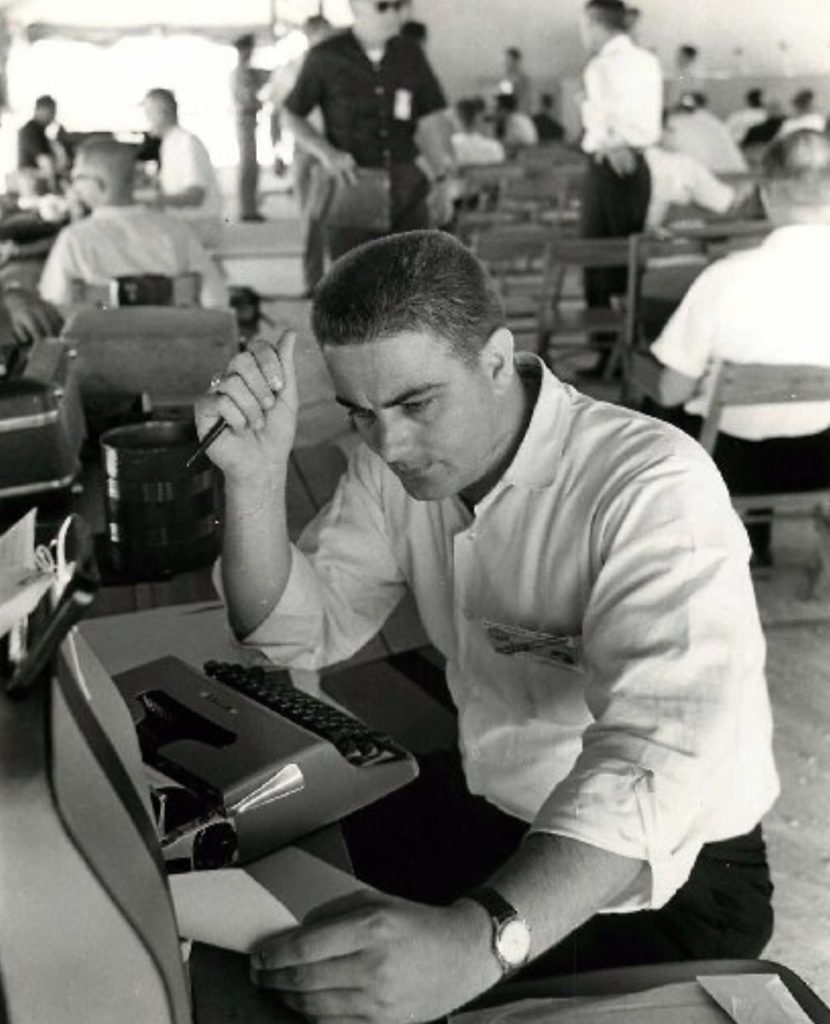
In 1967, the CIA issued a memo to its army of media “assets” instructing them on how to counter so-called “conspiracy theorists” who challenged the veracity of the Warren Commission report, which determined that Lee Harvey Oswald was the lone assassin of President John F. Kennedy.[1]
One of the CIA’s “assets” is believed to have been Hugh G. Aynesworth, a long-standing reporter for The Dallas Morning News who made a career of trying to invalidate the claims of so-called JFK conspiracy theorists.
Aynesworth died on December 23 at his home in Dallas, Texas, at the age of 92.
Texas television station KERA published a laudatory obituary heralding Aynesworth, who started working at The Dallas Morning News in 1960, describing him as a “renowned Dallas journalist and bestselling author.” The article went on to quote Robert Mong, the former editor-in-chief at The Dallas Morning News, who said: “Personally, I don’t know that there’s ever been a better reporter to come out of Dallas, really.”[2]
But according to noted JFK researcher Robert Morrow, “Hugh did the same thing to truth and the JFK assassination as [serial killer] Ted Bundy did to the Florida State University Chi Omega house on January 15, 1978, except Aynesworth [producer of a Netflix documentary on Ted Bundy] did his butchering for 60 years.”[3]
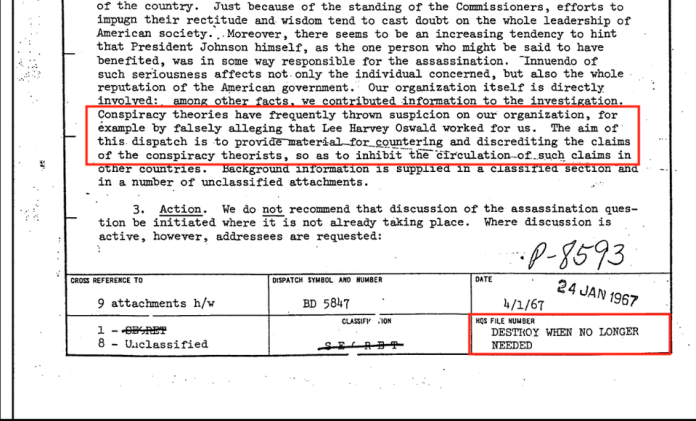
A native of Clarksburg, West Virginia, who started his journalism career as freelancer for the Clarksburg Exponent-Telegram and sports writer for the Fort Smith (Arkansas) Times Record, Aynesworth claimed to have been the only reporter present in both Dealey Plaza, when Kennedy was fatally shot, and the Texas Theatre when police arrested Lee Harvey Oswald.
Aynesworth also claimed to have been present in the basement of the Dallas Police Headquarters when Jack Ruby shot Oswald and was the first newspaperman to get an interview with Oswald’s widow, Marina, whom he bragged about having an affair with.[4]
In a May 1967 Newsweek article “The JFK Assassination Conspiracy,” which he sent an advanced copy to White House Press Secretary George Christian, Aynesworth accused New Orleans District Attorney Jim Garrison of engaging in bribery to advance what Aynesworth considered to be conspiratorial theories about the JFK assassination.[5]
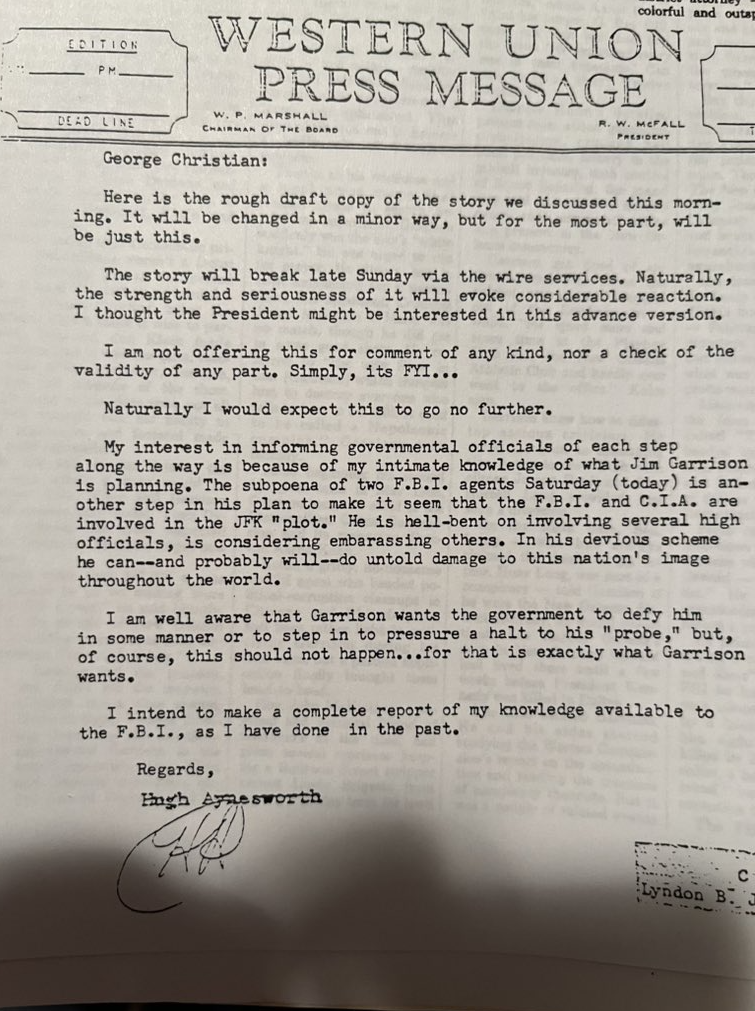
Garrison’s investigation into JFK’s assassination—which has been validated by new evidence—provided the inspiration for Oliver Stone’s 1992 film JFK, and led to the prosecution of Clay Shaw, Director of the International Trade Mart in New Orleans and CIA employee whom Garrison accused of being part of the JFK assassination conspiracy.[6]

Aynesworth claimed that one of Garrison’s investigators, Lynn Loisel, had offered a witness, Alvin Beauboeuf, $3,000 and a job with an airline if he would “fill in the facts” of the alleged meeting to plot the death of the president.
Aynesworth in turn claimed to have been alerted to the fact that, when the DA’s office learned that this entire bribery attempt had been tape-recorded, two of Garrison’s men returned to the witness and threatened him with physical harm.
Garrison disputed Aynesworth’s allegations in his book On The Trail of the Assassins (1988), writing that, “as for the $3,000 bribe, by the time I came across Aynesworth’s revelation, the witness our office had supposedly offered it to, Alvin Beauboeuf, had admitted to us that it never happened. Aynesworth, of course, never explained what he did with the ‘evidence’ allegedly in his possession. And the so-called bribery tape recording had not, in fact, ever existed.”[7]
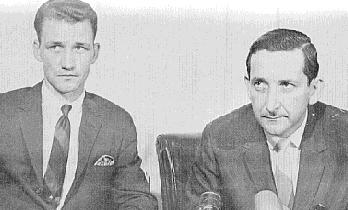
Historian Jim DiEugenio was right on the mark when he called the Newsweek article “a venomous hatchet job that had one aim: to stigmatize Garrison and, by doing that, to neutralize his investigation by turning the public’s attention away from his discoveries and toward the controversy being manufactured by Aynesworth [and other associates].”
In February 1969, Aynesworth wrote another “venomous” hit piece in The Pittsburgh Press in which he compared the Clay Shaw trial to a three-ring circus and “show trial” run by Garrison, whom, he said, had been “making a vote-getting spectacle of himself since he entered the New Orleans political scene in 1963 as an unknown lawyer running for district attorney.”[8]
Garrison ran a kind of a “one-man Mardi Gras,” according to Aynesworth, in which he “whooped up and down tawdry old Bourbon Street in a white dinner jacket, closing a few strip joints and driving the B-girls into honest prostitution.”
After milking Bourbon Street for all the publicity he could get, Garrison “discovered the Warren Report” two years after it was written and “sent his staff members to run down every rumor, check out every loony, accept every conspiratorial statement as true and…claimed to have solved the assassination.”
In Aynesworth’s depiction, Garrison was a self-interested publicity hound whose mad theories were readily dismissed by what he called the “responsible press.”
Aynesworth even claimed that, when Garrison was dismissed from the military in 1951, he was judged to be “totally disabled from the standpoint of military duty and moderately severely incapacitated in civilian adaptability.” Army doctors had found him to be “the victim of a severe and disabling psychoneurosis of long duration” complicated by attacks of diarrhea and extreme fatigue.
Aynesworth’s piece was one of character assassination whose purpose was to discredit Garrison’s investigation by impugning Garrison and his motives.
The piece failed to explore the facts of the Shaw case and did not attempt at any kind of balanced assessment of the evidence compiled against Shaw or discussion of the deeper political implications of the case—standard fare for a CIA-style hit piece with a political agenda behind it.
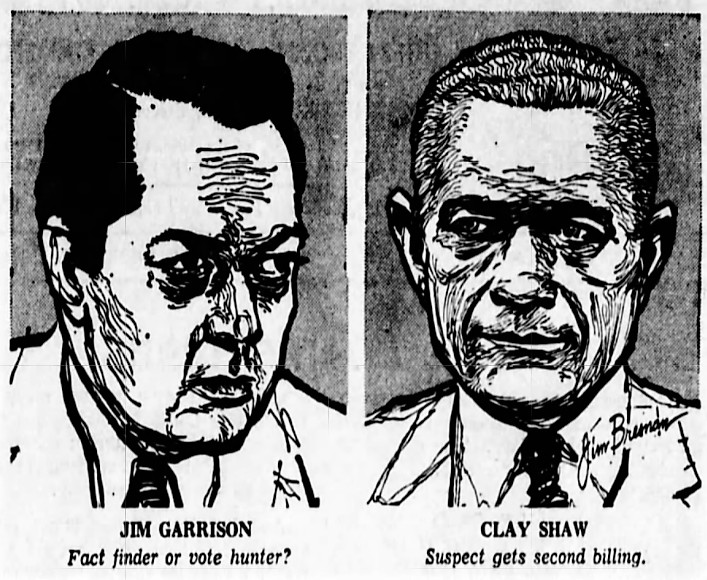
Aynesworth’s hatchet piece on Garrison fit with a pattern in the media, exemplified also by James Phelan who wrote an article in The Saturday Evening Post claiming that Garrison’s office had drugged a friend of David Ferrie, a CIA agent Garrison accused of being involved in the JFK assassination, and planted the conspiracy story in his brain, compelling him to report it to Assistant D.A. Andrew Sciambra.[9]

Aynesworth himself continued to smear Garrison even after his death, telling an interviewer in 1998 (six years after Garrison died) that Garrison was “one of the sickest people that I’ve ever known. There’s no doubt in my mind that the man was insane! Despite being brilliant in many ways, he knew the arts, famous things in history, and he was learned. The man was a devious, nasty man who committed more crimes in his investigation than anybody that he ever accused.”
An Intelligence Asset Using the Dirty Tricks of the Trade
Declassified documents show that Aynesworth was in contact with the Dallas CIA office and had offered his services to the CIA, which considered him to be a “solid Warren Commission man on the assassination.” In 1962, Aynesworth shot baskets with Fidel Castro outside a Havana hotel, which could have been part of an undercover assignment.[10]
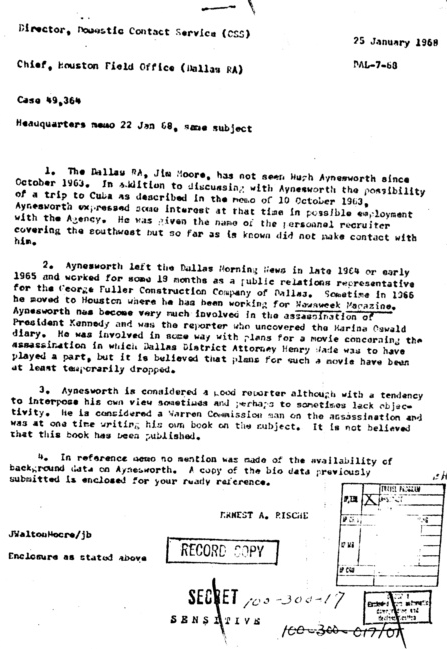
Aynesworth admitted at the 2013 Texas book Festival to visiting with J. Walton Moore, head of the Dallas CIA’s Domestic Contacts Division before his trip to Cuba and to being asked by Moore to tell him everything he saw in Cuba, though claimed that he never heard from Moore again following his trip.[11]
Moore just happened to be the CIA’s controller of George de Mohrenschildt, Oswald’s CIA handler, who was a leader in Dallas’s White Russian community who had worked for the CIA in Yugoslavia, Venezuela, Guatemala and Haiti.
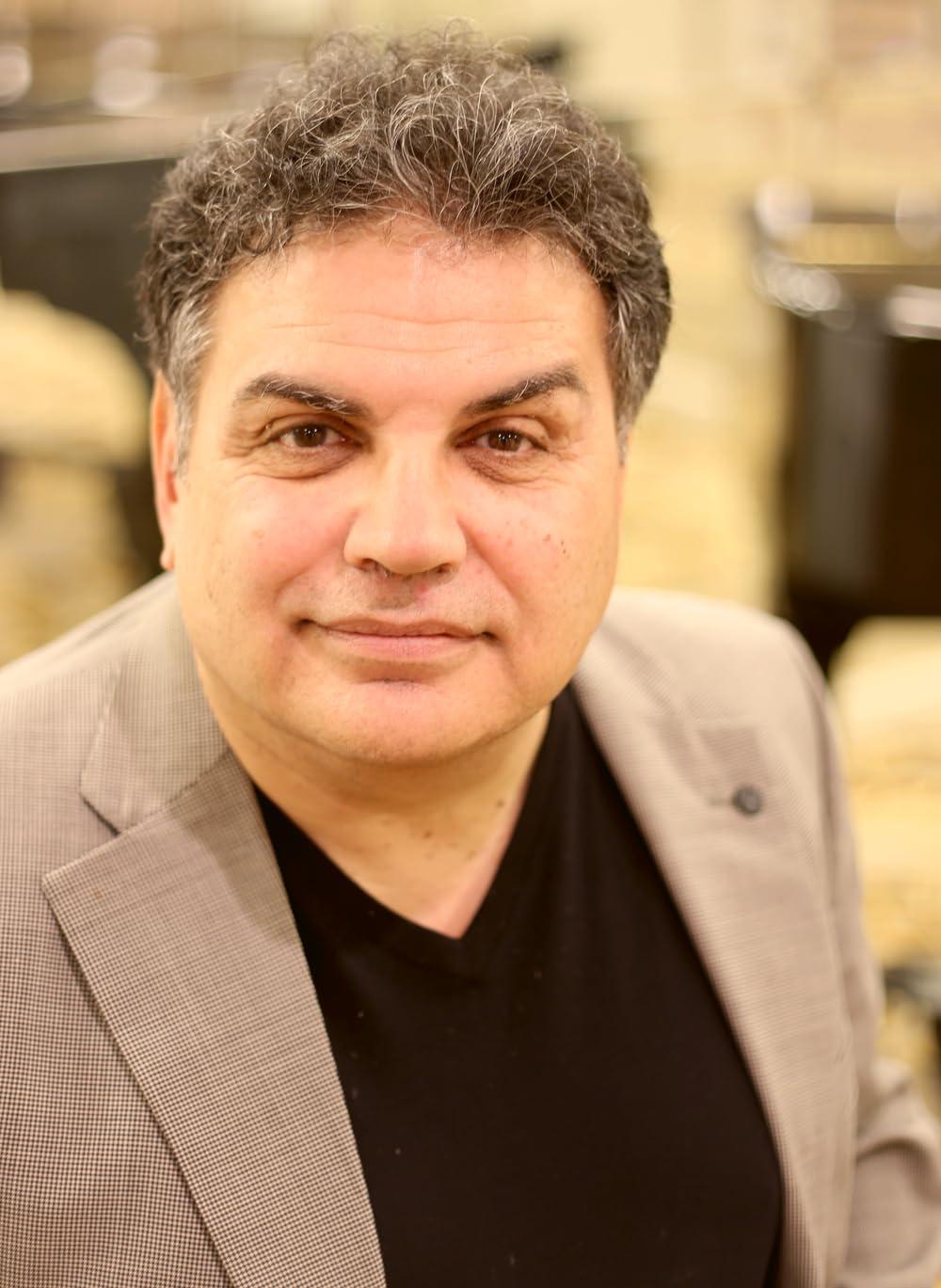
Jim DiEugenio stated: “It has been demonstrated that Aynesworth was—at the minimum—working with the Dallas Police, Shaw’s defense team, and the FBI. He was also an informant to the White House, and had once applied for work with the CIA. As I have noted elsewhere, in the annals of this case, I can think of no reporter who had such extensive contacts with those trying to cover up the facts in the JFK case. And only two come close: Edward Epstein and Gerald Posner.”
According to DiEugenio, when Aynesworth was working for Newsweek, “all the indications are the CIA planted him there and began feeding him extraordinary information on David Ferrie [witness in the case and CIA pilot in Oswald Civil Air Patrol attachment and conspirator in JFK assassination who turned up dead]. Info which no investigative reporter had at the time. Further, Peter Goldman said that Aynesworth acted out of the regular chain of command while he was at Newsweek. Hugh himself has admitted that one of his preoccupations has been preserving the official story. At any cost, which includes blackmail and bribery.”[12]
Agent of CIA Disinformation
The blackmail allegedly included that of Marina Oswald, Lee Harvey’s widow, who implicated her late husband in Kennedy’s death when her words in Russian were distorted by her translator, Ilya Mamantov, a vehement anti-communist with ties to U.S. intelligence.
Rachel Rendish was a friend of Mamantov and, in 1994, was shocked to learn the conspiratorial goings-on when Marina Oswald told her that her words in Russian were being mis-translated by Mamantov.

Dr. Ilya Mamantov [Source: findagrave.com]
Rendish said that Aynesworth functioned as Marina Oswald’s intelligence blackmailer.
At the time that Aynesworth first met Marina in February 1964, Marina had been put under FBI surveillance. Aynesworth assisted intelligence in recording private moments, which Marina did not want leaked to the public because it would have been embarrassing to her and her family.
In the 1990s, Aynesworth offered to show Rendish the film in hopes of turning her against Marina.[13]
In an interview with CovertAction Magazine, Rendish, who now lives in Greenville, Texas, said that Aynesworth was a “CIA media asset who was not an ethical person; and someone who was immoral. Only a scum-bucket could do those kind of things.”
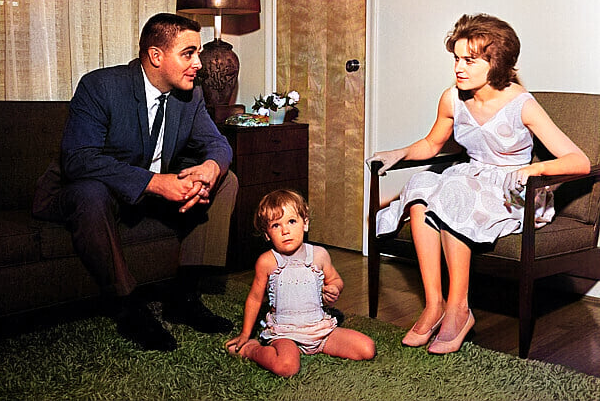
Those “kind of things” included participating in a CIA disinformation operation designed to create the impression that Oswald was pro-Soviet and pro-communist “political radical leftist” when in reality he was an anti-communist who worked for the CIA and was set up as a patsy.
Aynesworth was given secret and exclusive access to Lee Harvey Oswald’s alleged diary from when he was a defector to the Soviet Union, and profited handsomely from the sale of the diary, which was leaked with the purpose of solidifying the public impression that Oswald was pro-Soviet.[14]
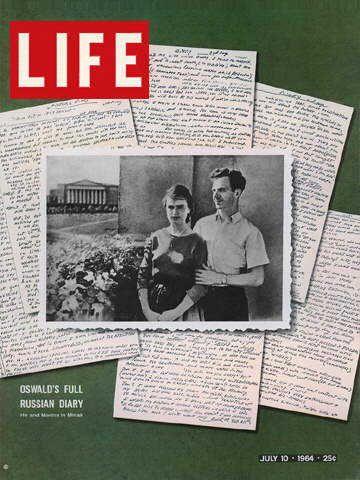
When Life magazine gained access to the diary to publicize it, Rendish said that the receipt was in the name of Paula Aynesworth, Hugh’s wife. The receipt was found in the Holland McCombs Papers at a college in Tennessee. McCombs was a Life magazine journalist and editor and friend of Clay Shaw.[15]
Earl Warren carried out a brief investigation of the “leak” of Oswald’s diary but it never amounted to anything.[16]
To further the disinformation, Aynesworth would tell people that Kennedy was killed in a “communist plot” and that the Warren Commission did a “coverup for Moscow.”[17]
According to Rendish, people like Aynesworth had no integrity; they would say anything if they were told to do so. When Aynesworth worked for PBS Dallas, people would call in and say that they did not want to hear from an asset working for the CIA; they knew his was a paid opinion. For some time thereafter, Aynesworth went away, though he eventually came back.
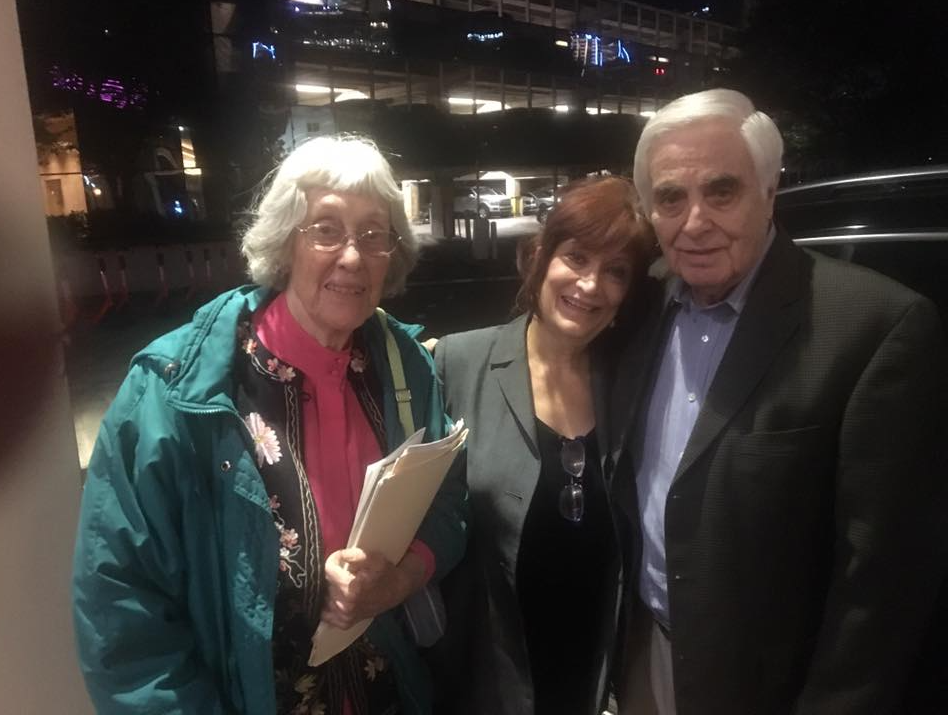
Assisting Shaw’s Defense
Aynesworth’s lack of integrity was apparent in his coverage of the Shaw trial as he presented himself to readers as an objective reporter when he was assisting the Shaw defense by supplying it with information and interviewing and even trying to blackmail witnesses.[18]
After going through Aynesworth’s personal reporting files, DiEugenio said that he realized that Aynesworth had access to an incredible amount of CIA background information about witnesses and suspects in Garrison’s investigation, which he shared with Shaw’s defense.
Aynesworth was tied into certain double agents inside the New Orleans district attorney’s office, like Garrison investigator Bill Gurvich, whose files he provided to the FBI. (Aynesworth boasted of having informants in place in Garrison’s office).
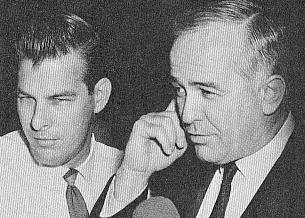
With their information, Aynesworth went ahead and talked to certain witnesses when he knew Garrison was about to approach them with the goal of trying to talk them out of their stories or smearing Garrison in advance.
Aynesworth was so wired into Garrison’s office and Shaw’s defense that he would relay his taped phone calls with prospective Garrison witnesses to defense lawyers, like Ed Wegmann.[19]
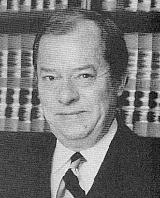
After Gurvich got him a purloined copy of a trial brief, Aynesworth went up to the Clinton-Jackson area 120 miles northeast of New Orleans before the Shaw trial to talk certain witnesses out of their stories and from testifying about the covert activities of Lee Harvey Oswald, Jack Ruby, David Ferrie and Clay Shaw.[20]
Among them was Sheriff John Manchester, who identified Shaw as the driver of the car carrying David Ferrie and Lee Oswald.
When he could not talk the local lawman out of his story, Aynesworth tried to bribe him with the offer of a CIA job as a handler in Mexico paying $38,000 a year (over $346,667 today), which Manchester did not accept.[21]
If Aynesworth was not an intelligence asset, how could he have offered Manchester a CIA job?
Trying to Bring Down Another Warren Commission Critic
Along with Garrison, Aynesworth collaborated with U.S. intelligence agencies in trying to bring down Mark Lane, an attorney whose 1966 book Rush to Judgment was among the first to challenge the credibility of the Warren Commission Report.
Using the language of U.S. intelligence, Aynesworth called Lane “a troublemaker” “communist” and “fast buck artist.”[22] He claimed that Lane “pretended to be an expert on all aspects of the weird tragedy” after spending a mere two days in Dallas, though Lane studied the JFK assassination intensively and knew a great deal about it.
Aynesworth further reported to FBI Director J. Edgar Hoover that Lane was a homosexual, which the FBI could use against him, and slipped photographs of Lane during a sex orgy to the Clay Shaw defense to distribute to interested parties.[23]
In November 1966, Aynesworth wrote to Holland McCombs, urging him to write the kind of hit piece in Life magazine about Lane that Aynesworth had written for Newsweek about Jim Garrison.
Aynesworth urged McCombs to investigate, among other things: a) why Lane was pressured out of the New York State Assembly after a single term; b) what pictures Queens District Attorney Frank O’Connor had that halted Lane’s political career (presumably pictures about his homosexuality); c) Lane’s time as a “Freedom Rider”; and d) his marriage to a Danish woman days before he sued a Danish paper for libel.
Aynesworth further told McCombs that he had assisted Lane in his research during a three-hour meeting at his home and wanted Life to repudiate the main thesis of Rush to Judgment.[24]

Ironically, Aynesworth told McCombs that Lane would never have had a vacuum in which to operate if the American press in its coverage of the JFK assassination had been “worth a damn.”
In Aynesworth’s assessment, the American press had failed to cover the JFK assassination. Few people did much, he wrote to McCombs. “Fewer newspaper or television stations took the time to cover the situation adequately.”[25]
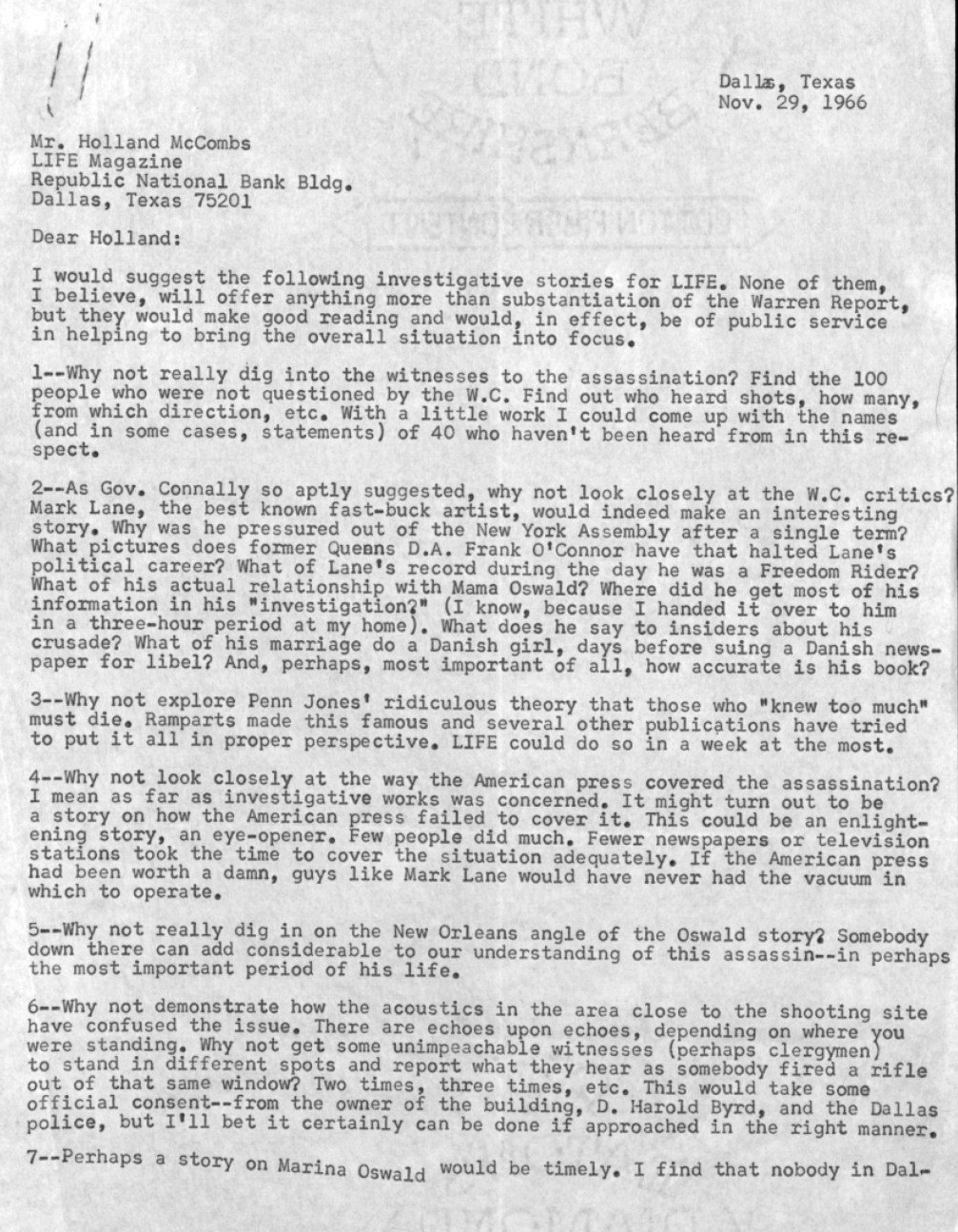

An additional person whom Aynesworth wanted to discredit was Penn Jones, a Texas author critical of the Warren Commission report who wrote a devastating exposé of Lyndon B. Johnson pointing to Johnson’s involvement in politically motivated murders.
Aynesworth wrote to McCombs, “why not explore investigate Penn Jones’ ridiculous theory that those who knew too much must die. Ramparts made this famous and several other publications have tried to put this in proper perspective. Life could do so in a week at most.”[26]
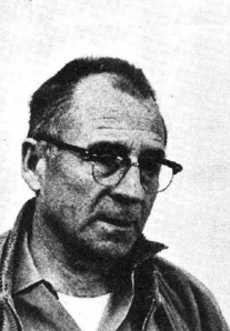

A Half Century of Following the CIA’s Script
After the assassination, when rumors began to circulate that Oswald was an FBI informant, and was even assigned an informant number, Aynesworth, along with colleagues Lonnie Hudkins and Joseph Goulden, floated the story that the informant number had been made up to make it seem real.
This was part the effort to discredit the idea that Oswald was an intelligence operative—for which there is overwhelming evidence—and to reinforce the idea of him as a deranged left-winger and lone nut assassin as the Warren Commission presented it.
In his first interview at Dealey Plaza, Aynesworth claimed that a man standing across the street from the Texas School Book Depository told him that he had seen Lee Harvey Oswald on the sixth floor. “The man described [Oswald] pretty well,” Aynesworth said. “The first all-points-bulletin that went out was pretty accurate.”
However, two witnesses—Oswald’s boss, Roy Truly, and police officer Marrion Baker—said they saw Oswald less than two minutes after the shooting on the second floor calmly drinking a Coke, which means that Oswald could not have been the shooter on the sixth floor.
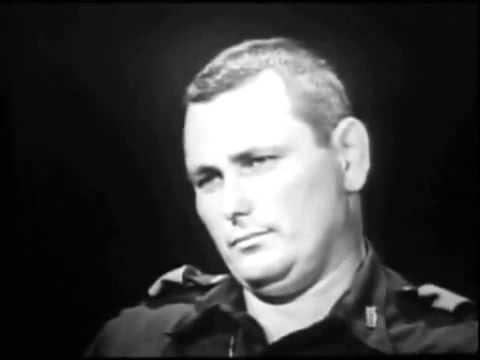
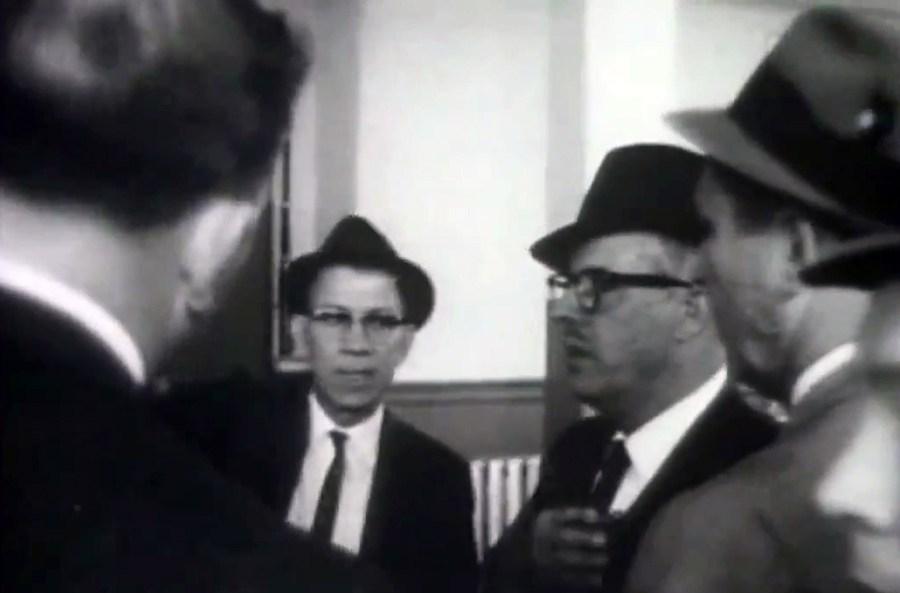
In an interview with a Dallas radio station in 1979, Aynesworth said that, while he knew that most people in the country believe there was a conspiracy, “I just refuse to accept it and that’s my life’s work.”
Aynesworth was quoted 28 years later, in a 2007 profile in The Arkansas Democrat Gazette: “I would bet my life, and I rather enjoy my life, that you can’t show me one shred of evidence leaning toward a specific conspiracy theory.” The theories persist “partly because there’s money in it, and partly because it’s more fun to believe in conspiracies. Also, it’s a little scary to think that two almost deranged type people, Oswald and Ruby, could change the course of history.”

In November 2012, Aynesworth published an article in The Dallas Morning News entitled “‘One-man truth squad’ still debunking JFK conspiracy theories,” which heaped praise on the website of a 69-year-old former insurance claims adjuster named Dave Perry, who developed a website that debunked wild conspiracy theories about the JFK assassination.
Perry claimed to have exposed LBJ’s lover Madeleine Brown as a fraud and was correct on some things about her, though some aspects of her story checked out.
Characteristically, Aynesworth ended the piece with a quote from Gary Mack, then curator of the Sixth Floor Museum at Dealey Plaza and proponent of the Oswald ‘lone nut” theory, who said: “Some conspiracy theorists just want confirmation of their version of truth. It is satisfying when folks like Dave Perry step forward with documented evidence and information that sheds additional light on what really happened.”[27]
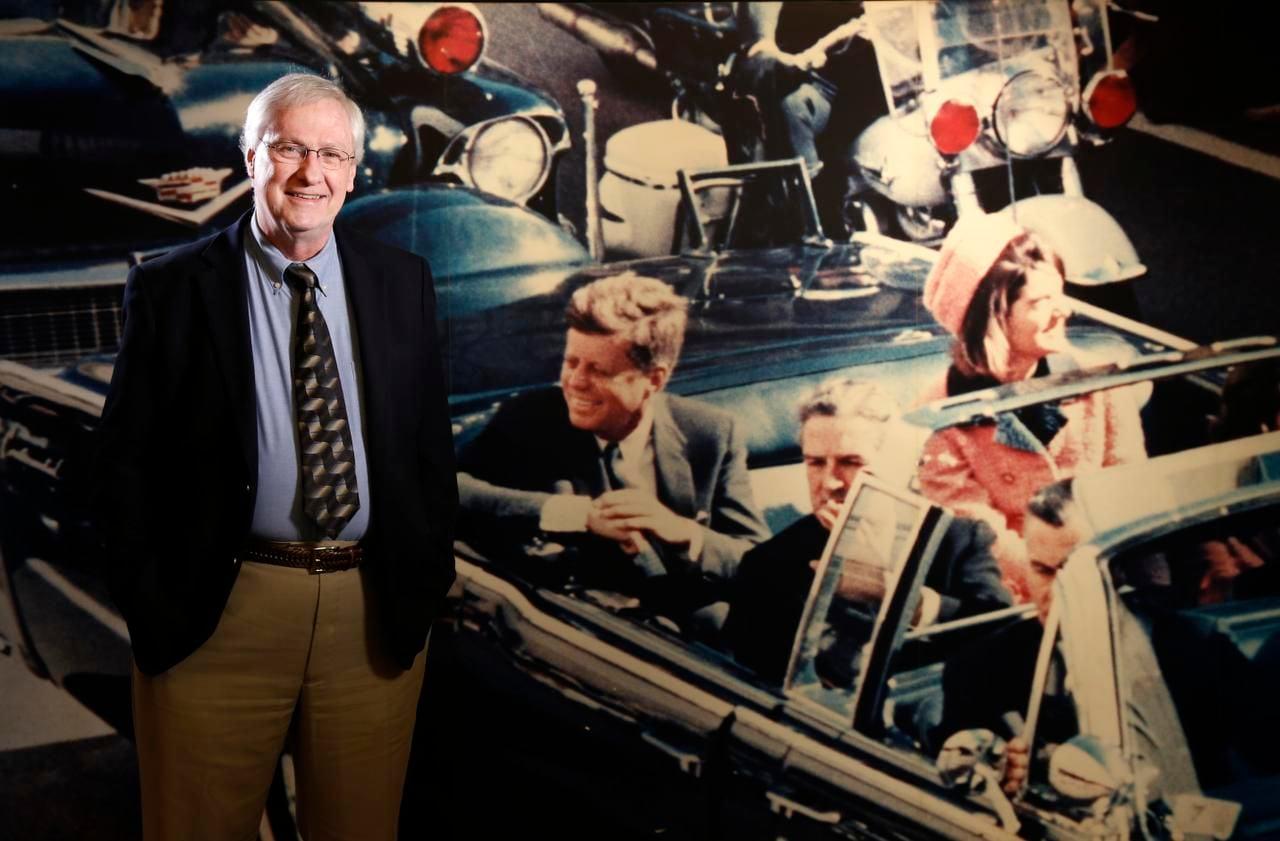
Vindication in The Washington Post
That Aynesworth’s views had long staying power—at least in the mainstream—was evident in a laudatory December 27 Washington Post obituary written by Brian Murphy, which praised Aynesworth’s effectiveness in “toppling conspiracy theories.”
Murphy wrote that, “In story after story, Mr. Aynesworth took wrecking balls to conspiracy plots outlined by one of the most prominent skeptics of official accounts, New Orleans District Attorney Jim Garrison, who proposed ideas such as that the CIA had organized the Kennedy assassination to keep the Vietnam War going.”
The Post—a newspaper with deep intelligence connections and a long history of covering up the truth surrounding the JFK assassination—further made it seem like Aynesworth was right and Garrison wrong when the obituary noted that “Mr. Aynesworth’s coverage and research into Garrison’s claims about the JFK killing ended up filling dozens of cabinets and storage bins in Mr. Aynesworth’s home.”[28]

A Skilled Liar
According to Jim DiEugenio, Oswald’s alleged shooting of Kennedy was not enough for Hugh. He actually tried to incriminate Oswald in an attempted murder of Richard Nixon, which even the Warren Commission would not buy.
At the Texas Book Festival in Austin in October 2013, Robert Morrow confronted Aynesworth directly and asked him if he was or had ever been a CIA media asset.
Aynesworth responded: “That is a fair question” before going on to say that he “never took any money from any government agency.”
Morrow says that this answer was very revealing as Aynesworth did not issue a denial or answer the key operative part of the question put to him.
His answer was misleading, furthermore, because the CIA very often pays its assets through business intermediaries and other such non-governmental fronts, or simply helps ensure career rewards to people who cooperate with it.[29]
Someone named James Feldman, in responding to a video of Morrow and Aynesworth’s exchange posted on YouTube, stated: “I will give Aynesworth credit as a very skilled liar, however, with his cleverly deceptive and evasive answer that appears to be ‘sincere.’”
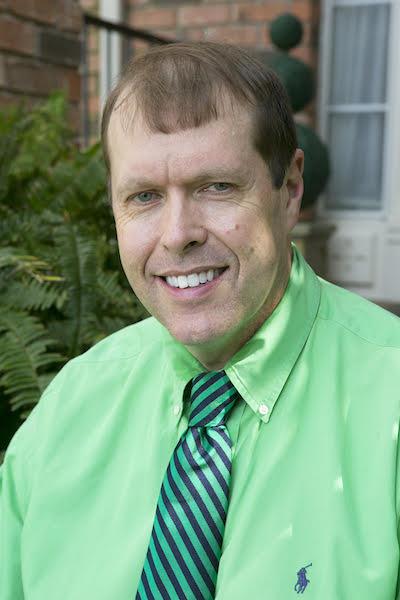
Destroying Democracy
Hugh Aynesworth may not be a household name, and for most people, his death went unnoticed.
He was a skilled professional reporter with good listening, writing and investigative skills, who probably felt that he was on a righteous crusade to debunk paranoid conspiracy theories about the JFK assassination.
But at the end of the day, Aynesworth’s career was significant in embodying the corruption of the journalism profession by the FBI, CIA and other intelligence agencies.
Aynesworth helped to sow doubt in the minds of newspaper readers about the credibility and underlying motivations of Jim Garrison and Mark Lane in their investigations of the Kennedy assassination when he and other journalists of his era should have been raising critical questions about the integrity of American leaders like Lyndon B. Johnson, J. Edgar Hoover, Allen Dulles and other members of the Warren Commission.
The latter were the real ones with malign intent who coordinated and covered up a horrific crime that has had serious repercussions right up through the present day.

- The author wishes to thank Robert Morrow for his help in writing this piece.
-
One of the methods was to assert that conspiracy talk had been initiated by communist propagandists. ↑
-
Wesley Pruden, who worked with Aynesworth on the staff of the Arkansas Gazette in the 1950s, said that “Hugh had the gift of actually listening when people talked. People…told Hugh things, sometimes when for their own good they shouldn’t have. Listening to people who talk too much for their own good is manna for a reporter.” ↑
-
Ted Bundy was a serial killer who escaped from a Colorado jail and broke into the Chi Omega sorority house at Florida State University in the middle of the night in January 1978 to rape and kill women there. ↑
-
Jack Schnedler, “Hugh Grant Aynesworth: Arkansas was the starting point for the prodigious journalism career of Hugh Aynesworth. A prime authority on the assassination of President John F. Kennedy, he’s still working hard while recently retired,” Arkansas Online.com, July 8, 2007, https://www.arkansasonline.com/news/2007/jul/08/hugh-grant-aynesworth-20070708/. Aynesworth claimed to have seen Oswald try and shoot Dallas police officer Nick McDonald. (“The Man Who Saw Too Much”, by William Broyles, Texas Monthly, March 1976), though the evidence indicates that Oswald did not do any such thing. According to Schnedler, Aynesworth covered every U.S. manned space flight from the first Mercury orbital voyage by John Glenn in 1962 to the Apollo 11 moon landing in 1969, and reported a host of big stories, from the hunt for Martin Luther King, Jr., assassin James Earl Ray in 1968 to the 1993 Waco siege by federal agents that ended in the deaths of more than 70 Branch Davidians. In 2019, he helped produce a Netflix series on serial killer Ted Bundy about whom he had co-written a book in the late 1970s after conducting a series of jailhouse interviews with him. Aynesworth’s first two stories on the JFK assassination were about J.D. Tippit, the police officer allegedly killed by Lee Harvey Oswald, and about the alleged escape route that Oswald allegedly took from the Texas School Book Depository. The escape story was dubious because Oswald actually rode the city bus. Aynesworth claimed also that he was at the Tippit murder scene before the time that Tippit was shot, when it was impossible for Oswald to have been there. How he could have anticipated Oswald’s movements and alleged actions also goes unexplained. Aynesworth had worked for The Denver Post and claimed to have been stabbed in the neck while investigating corruption in the Teamsters, although an FBI report suggested that he was stabbed after sleeping with the wife of an ex-convict, which was the reason he took a position with The Dallas Morning News. ↑
-
See Jim Garrison, On the Trail of the Assassins (New York: Sheridan Square Press, 1988), 187. Aynesworth wrote that “Jim Garrison is right. There has been a conspiracy in New Orleans—but it is a plot of [Jim] Garrison’s own making…It is a scheme to concoct a fantastic ‘solution’ to the death of John F. Kennedy, and to make it stick; in this case, the district attorney and his staff have been indirect parties to the death of one man and have humiliated, harassed and financially gutted several others.” Aynesworth wrote in a telegram to George Christian that he was informing because he is aware of what Garrison is up to. Notably, he wanted “to make it seem that the FBI and CIA are involved in the JFK plot.” Aynesworth felt that Garrison “can—and probably will—do untold damage to this nation’s image throughout the world.” It should be noted that Lyndon Johnson was close personal friends with Katherine Graham the owner of The Washington Post which also owned Newsweek. The Washington Post for years has had deep intelligence connections. ↑
-
Garrison, On the Trail of the Assassins, 100. An ex-Office of Strategic Services (OSS) Major, Shaw was exposed in the Italian press as an Agency man in Rome who tried to bring fascism back to Italy. He was on the board of directors of Centro Mondiale Commerciale which funneled money to right-wing paramilitary groups and fascists in Italy and other Western European countries as part of NATO’s Operation Gladio. For further corroboration of Garrison’s investigation, see Jim DiEugenio, Destiny Betrayed: JFK, Cuba, and the Garrison Case (New York: Skyhorse, 2012). Shaw committed perjury at his trial when he lied to his own defense counsel about his work for the CIA. ↑
-
Garrison, On the Trail of the Assassins, 187, 188. ↑
-
Hugh Aynesworth, “’Big Jim’s Three-Ring Shaw Trial a One-Man Show,” The Pittsburgh Press, February 2, 1969. ↑
-
Garrison, On the Trail of the Assassins, 188. Bob Considine, a Hearst reporter with strongly anti=union and pro-war views who wrote a best-selling book on the Doolittle raid over Tokyo, was characteristic in branding critics of the Warren report as “opportunists,” “crackpots,” and “graverobbers” in his introduction to a 1967 book written by Ricardo Warren Lewis, The Scavengers and Critics of the Warren Report: The Endless Paradox (New York: Dell, 1967). In Lee Israel, Kilgallen (New York: Delacorte Press, 1979), 401. ↑
-
Aynesworth first traveled to Cuba before the Cuban Missile Crisis. Aynesworth said that Castro was a good shot in basketball but could not run very fast in his combat boots. He said he was friendly and sweated a lot. At the time of his visit to Cuba, Aynesworth was the aerospace editor for The Dallas Morning News. ↑
-
Moore reported to the Chief of the Dallas CIA Domestic Contacts Division on the “possibility of Hugh Grant Aynesworth making a trip to Cuba.” Moore served in the OSS during World War II in China with Charles Ford who was the CIA agent assigned to work with Robert F. Kennedy at JMWAVE and worked with Johnny Roselli, the Mafia boss the CIA had previously recruited to kill Castro. ↑
-
DiEugenio wrote that “Aynesworth had the ethics of a Tammany Hall politician. Only in Dallas, could such a presstitute have an award named after him.” in another piece published after Aynesworth’s death, DiEugenio called Aynesworth “a piece of human flotsam masquerading as a reporter on the JFK case.” ↑
-
Rendish told Aynesworth that she already knew about the film and did not want to see it. ↑
-
Mrs. Shirley Martin, Owasso Oklahoma, letter to Jim Garrison, May 20, 1967, Harold Weisberg collection at Fort Hood College; Jim DiEugenio, “Hugh Aynesworth: Refusing a Conspiracy Is His Life’s Work,” Kennedys and King, December 3, 2006, https://www.kennedysandking.com/content/hugh-aynesworth-refusing-a-conspiracy-is-his-life-s-work. In declassified documents, it appears that the diary was pilfered from the Dallas Police archives by Dallas assistant district attorney Bill Alexander and then given to Aynesworth, who was his friend. Aynesworth then put it on the market to other magazines, including Newsweek. It eventually ended up in Life magazine. Alexander, Aynesworth and the reporter’s wife Paula split thousands of dollars. Oswald’s widow was paid later by Life since, originally, Aynesworth had illegally cut her out of the deal. Rendish is among those to believe that the diary may have been a fabrication written by an intelligence agent to make it look like Oswald was pro-Soviet. ↑
-
According to documents published at the Mary Ferrell Foundation, Life magazine wrote the payment to Paula Aynesworth, who was to split the money with Hugh and Bill Alexander, the assistant district attorney to Henry Wade. ↑
-
Mrs. Shirley Martin, Owasso, Oklahoma, letter to Jim Garrison, May 20, 1967 (Mrs. Shirley Martin, Owasso, Oklahoma, letter to Jim Garrison, May 20, 1967 (from the file of Harold Weisberg, Fort Hood College). Martin was a researcher who corresponded with Garrison. ↑
-
Mrs. Shirley Martin, Owasso, Oklahoma, letter to Jim Garrison, May 20, 1967 (from the file of Harold Weisberg, Fort Hood College). ↑
-
Joan Mellen, A Farewell to Justice: Jim Garrison, JFK’s Assassination, and the Case That Should Have Changed History (Washington, D.C.: Potomac Books, 2007), 152. ↑
- James DiEugenio, The Assassinations: Probe Magazine on JFK, MLK, RFK and Malcolm X (London: Feral House, 2012), 27.
-
DiEugenio, Destiny Betrayed, 27. ↑
- Mellen, A Farewell to Justice, 235. Manchester allegedly told Aynesworth fittingly: “I advise you to leave the area. Otherwise I’ll cut you a new asshole.” Mellen shows how the attempt to sabotage Garrison’s investigation that Aynesworth was part of reached the highest levels of the U.S. government. Garrison himself concluded that Aynesworth’s main employer was the CIA.
-
Hugh Aynesworth to Holland McCombs, Dallas, Texas, November 29, 1966. From the file of Robert Morrow. ↑
-
Mellen, A Farewell to Justice, 152. ↑
-
Idem. ↑
-
Idem. In 1964, Aynesworth also wrote a hatchet-job review of Joachim Joesten’s book Oswald: Assassin or Fall Guy?, one of the first books on the Kennedy assassination. “If you would listen to [Joesten],” Aynesworth sneered, “he would have you thinking that Lee Harvey Oswald was a polite little misunderstood youth who just got mixed up in the wrong company…It’s the same old tripe with some new flavoring.” ↑
-
Hugh Aynesworth to Holland McCombs, Dallas, Texas, November 29, 1966 (from the file of Robert Morrow). Penn Jones was author of a four-volume series critical of the Warren Commission Report which linked Johnson to political murders. One in the series is available here. ↑
-
Hugh Aynesworth, “‘One-man truth squad’ still debunking JFK conspiracy theories,” The Dallas Morning News, November 17, 2012. While some of Perry’s research is accurate, other aspects are dubious. ↑
-
The Post’s obituary relished in Aynesworth’s reputation for “toppling conspiracy theories.” ↑
-
Aynesworth went from working on The Dallas Morning News to Newsweek before being appointed chief investigative reporter for ABC’s 20/20 news program. ↑
CovertAction Magazine is made possible by subscriptions, orders and donations from readers like you.
Blow the Whistle on U.S. Imperialism
Click the whistle and donate
When you donate to CovertAction Magazine, you are supporting investigative journalism. Your contributions go directly to supporting the development, production, editing, and dissemination of the Magazine.
CovertAction Magazine does not receive corporate or government sponsorship. Yet, we hold a steadfast commitment to providing compensation for writers, editorial and technical support. Your support helps facilitate this compensation as well as increase the caliber of this work.
Please make a donation by clicking on the donate logo above and enter the amount and your credit or debit card information.
CovertAction Institute, Inc. (CAI) is a 501(c)(3) non-profit organization and your gift is tax-deductible for federal income purposes. CAI’s tax-exempt ID number is 87-2461683.
We sincerely thank you for your support.
Disclaimer: The contents of this article are the sole responsibility of the author(s). CovertAction Institute, Inc. (CAI), including its Board of Directors (BD), Editorial Board (EB), Advisory Board (AB), staff, volunteers and its projects (including CovertAction Magazine) are not responsible for any inaccurate or incorrect statement in this article. This article also does not necessarily represent the views the BD, the EB, the AB, staff, volunteers, or any members of its projects.
Differing viewpoints: CAM publishes articles with differing viewpoints in an effort to nurture vibrant debate and thoughtful critical analysis. Feel free to comment on the articles in the comment section and/or send your letters to the Editors, which we will publish in the Letters column.
Copyrighted Material: This web site may contain copyrighted material the use of which has not always been specifically authorized by the copyright owner. As a not-for-profit charitable organization incorporated in the State of New York, we are making such material available in an effort to advance the understanding of humanity’s problems and hopefully to help find solutions for those problems. We believe this constitutes a ‘fair use’ of any such copyrighted material as provided for in section 107 of the US Copyright Law. You can read more about ‘fair use’ and US Copyright Law at the Legal Information Institute of Cornell Law School.
Republishing: CovertAction Magazine (CAM) grants permission to cross-post CAM articles on not-for-profit community internet sites as long as the source is acknowledged together with a hyperlink to the original CovertAction Magazine article. Also, kindly let us know at info@CovertActionMagazine.com. For publication of CAM articles in print or other forms including commercial internet sites, contact: info@CovertActionMagazine.com.
By using this site, you agree to these terms above.
About the Author

Jeremy Kuzmarov holds a Ph.D. in American history from Brandeis University and has taught at numerous colleges across the United States. He is regularly sought out as an expert on U.S. history and politics for radio and TV programs and co-hosts a radio show on New York Public Radio and on Progressive Radio News Network called “Uncontrolled Opposition.”
He is Managing Editor of CovertAction Magazine and is the author of six books on U.S. foreign policy, including Obama’s Unending Wars (Clarity Press, 2019), The Russians Are Coming, Again, with John Marciano (Monthly Review Press, 2018), Warmonger. How Clinton’s Malign Foreign Policy Launched the U.S. Trajectory From Bush II to Biden (Clarity Press, 2023); and with Dan Kovalik, Syria: Anatomy of Regime Change (Baraka Books, 2025).
Besides these books, Kuzmarov has published hundreds of articles and contributed to numerous edited volumes, including one in the prestigious Oxford History of Counterinsurgency .
He can be reached at jkuzmarov2@gmail.com and found on substack here.


Crucial unasked question about Lee Harvey Oswald:
Would a lone gunman really wait until his intended victim has actually gone past before he starts firing?
To my knowledge, the only person to raise that vital question was Craig I. Zirbel in this 1991 book The Teas Connection which helps to expose LBJ’s central role in the assassination.
I think that Oswald was telling the truth all along.
The Texas Connection. Sorry for the error.
For 90 years, the CFR – COUNCIL ON FOREIGN RELATIONS, has run America.
WHY ISN’T THE CFR IN THE HISTORY BOOKS?
Hardly one person in 1000 ever heard of the Council on Foreign Relations (CFR).
The Council on Foreign Relations was formally established in Paris in 1919 along with its British Counterpart the Royal Institute of International Affairs. The Council on Foreign Relations and Royal Institute of International Affairs can trace their roots back to a secret organization founded and funded by Cecil Rhodes, who became fabulously wealthy by exploiting the people of South Africa. Rhodes is the father of Apartheid.
The Council on Foreign Relations was founded by a group of American and British imperialists and racists intent on ruling the world. Many of the American members were American intelligence officers that belonged to the first American Intelligence Agency — THE INQUIRY. Many of the British members were British Intelligence Agents. THE INQUIRY and its members, who included such notable Americans as Col. Edward Mandel House, Walter Lippmann, Isaiah Bowman, and James Shotwell, wrote most of Woodrow Wilson’s 14 points.
The CFR/RIIA method of operation is simple — they control public opinion. They keep the identity of their group secret. They learn the likes and dislikes of influential people. They surround and manipulate them into acting in the best interest of the CFR/RIIA.
The Council on Foreign Relations, and the Royal Institute of International Affairs are adept at using the media to create massive psycho-political operations used to manipulate public opinion. The psycho-political operations are often designed to create tensions between different groups of people. The object is to keep the world in a state of perpetual tension and warfare to maximize profits from CFR/RIIA munition, medicine, media, energy, and food businesses.
The CFR has only 3000 members yet they control over three-quarters of the nation’s wealth. The CFR runs the State Department and the CIA. The CFR has placed 100 CFR members in every Presidential Administration since Woodrow Wilson. They work together to misinform and disinform the President to act in the best interest of the CFR not the best interest of the American People. At least five Presidents (Eisenhower, Ford, Carter, Bush, and Clinton) have been members of the CFR. The CFR has packed every Supreme court with CFR insiders. Three CFR members (Stephen Breyer, Ruth Bader Ginsberg, and Sandra Day O’Connor) sit on the supreme court. The CFR’s British Counterpart is the Royal Institute of International Affairs. The members of these groups profit by creating tension and hate. Their targets include British and American citizens.
The 100 CFR members that surround the president are “the Secret Team.” The “Secret Team” help carry out psycho-political operations scripted by CFR members in the state department and the Intelligence Organizations. The psycho-political operations are coordinated by a group of Council on Foreign Relations members called the Special Group. The Special Group evolved from the Psychological Strategy Board.
President Truman issued an executive order establishing the Psychological Strategy Board. The Board was run by CFR members Gordon Gray and Henry Kissinger. The PSB has close ties to the State Department and Intelligence Organizations. The purpose of the PSB was to co-ordinate psycho-political operations. Many of those operations were focused at Americans. The people became wary of the Psychological Strategy Board. Eisenhower issued an executive order changing its name to the Operations Coordination Board. The OCB was a bigger more powerful PSB. Gray and Kissinger ran the OCB too. President Kennedy abolished the OCB. It became an ad hoc committee called the “Special Group,” which exists today. The PSB/OCB/Special Group always has CFR members running and sitting on it. Since the Special Group was not formed by Executive Order it cannot be abolished.
On September 12, 1939, the Council on Foreign Relations began to take control of the Department of State. On that day Hamilton Fish Armstrong, Editor of Foreign Affairs, and Walter H. Mallory, Executive Director of the Council on Foreign Relations, paid a visit to the State Department. The Council proposed forming groups of experts to proceed with research in the general areas of Security, Armament, Economic, Political, and Territorial problems. The State Department accepted the proposal. The project (1939-1945) was called Council on Foreign Relations War and Peace Studies. Hamilton Fish Armstrong was Executive director.
In February 1941 the CFR officially became part of the State Department. The Department of State established the Division of Special Research. It was organized just like the Council on Foreign Relations War and Peace Studies project. It was divided into Economic, Political, Territorial, and Security Sections. The Research Secretaries serving with the Council groups were hired by the State Department to work in the new division. These men also were permitted to continue serving as Research Secretaries to their respective Council groups. Leo Pasvolsky was appointed Director of Research.
In 1942 the relationship between the Department of State and the Council on Foreign Relations strengthened again. The Department organized an Advisory Committee on Postwar Foreign Policies. The Chairman was Secretary Cordell Hull, the vice chairman, Under Secretary Sumner Wells, Dr. Leo Pasvolsky ( director of the Division of Special Research) was appointed Executive Officer. Several experts were brought in from outside the Department. The outside experts were Council on Foreign Relations War and Peace Studies members; Hamilton Fish Armstrong, Isaiah Bowman, Benjamin V. Cohen, Norman H. Davis, and James T. Shotwell.
In total there were 362 meetings of the War and Peace Studies groups. The meetings were held at Council on Foreign Relations headquarters — the Harold Pratt house, Fifty-Eight East Sixty-Eighth Street, New York City. The Council’s wartime work was confidential.17
In 1944 members of the Council on Foreign Relations The War and Peace Studies Political Group were invited to be active members at the Dumbarton Oaks conference on world economic arrangements. In 1945 these men and members of Britain’s Royal Institute of International Affairs were active at the San Francisco conference which ensured the establishment of the United Nations.
In 1947 Council on Foreign Relations members George Kennan, Walter Lippmann, Paul Nitze, Dean Achenson, and Walter Krock took part in a psycho-political operation forcing the Marshall Plan on the American public. The PSYOP included a “anonymous” letter credited to a Mr. X, which appeared in the Council on Foreign Relations magazine FOREIGN AFFAIRS. The letter opened the door for the CFR controlled Truman administration to take a hard line against the threat of Soviet expansion. George Kennan was the author of the letter. The Marshall Plan should have been called the Council on Foreign Relations Plan. The so-called Marshall Plan and the ensuing North Atlantic Treaty Organization defined the role of the United States in world politics for the rest of the century.
In 1950 another PSYOP resulted in NSC-68, a key cold war document. The NSC (National Security Council) didn’t write it — the Department of State Policy Planning Staff did. The cast of characters included CFR members George Kennan, Paul Nitze, and Dean Achenson. NSC-68 was given to Truman on April 7, 1950. NSC-68 was a practical extension of the Truman doctrine. It had the US assume the role of world policeman and use 20 per cent of its gross national product ($50 billion in 1953) for arms. NSC-68 provided the justification — the WORLD WIDE COMMUNIST THREAT!
NSC-68 realized a major Council on Foreign Relations aim — building the largest military establishment in Peace Time History. Within a year of drafting NSC-68, the security-related budget leaped to $22 billion, armed forces manpower was up to a million — CFR medicine, munition, food, and media businesses were humming again. The following year the NSC-68 budget rose to $44 billion. In fiscal 1953 it jumped to $50 billion. Today (1997) we are still running $300 billion dollar defense budgets despite Russia giving up because it went bankrupt.
America would never turn back from the road of huge military spending. Spending that included the purchase of radioactive fallout on American citizens in the 50’s, and buying thermonuclear waste from the Russians as we approach the year 2000. Spending resulting in a national debt of $5.5 Trillion Dollars that continues to grow, and interest payments of over $270 billion a year. Is the Council on Foreign Relations trying to make the United States economically vulnerable to influence from outside sources? Isn’t that treason?
THE INQUIRY, the PSB/OCB/Special group, the War and Peace Studies, the “X” Affair, and NSC-68 have had tremendous historical impact. Yet these events and the role played by the Council on Foreign Relations in sponsoring and carrying out the events are missing from our History books. You represent the people. Can you explain to me why the Council on Foreign Relations role in History has been left out of the History books? Why don’t we learn about them in High School History courses? Why don’t History majors in college learn about the Council on Foreign Relations?
If you want to learn about the CFR try the following:
TRAGEDY AND HOPE: HISTORY OF THE WORLD IN OUR TIME by Carroll Quigley. Tragedy and Hope: A History of the World in Our Time. NY: MacMillan, 1966. 1348 pages.
THE ANGLO-AMERICAN ESTABLISHMENT by Carroll Quigley. NY: Books in Focus, 1981.
THE HUMAN DIMENSION: EXPERIENCES IN POLICY RESEARCH by Hadley Cantril, Rutgers Univ Press, 1967.
THE WAR AND PEACE STUDIES OF THE COUNCIL ON FOREIGN RELATIONS 1939-1945, The Harold Pratt House 58th E. 68th Street, NY, 1946
THE ART AND SCIENCE OF PSYCHOLOGICAL OPERATIONS: Case Studies of Military Application Vol. 1 and 2, Pamphlet No. 725-7-2, DA Pam 525-7-2, Headquarters Dept of the Army Washington, DC, April 1976. Pollock, Daniel C Project Director & Editors De Mclaurin, Ronald, Rosenthal, Skillings(Carl F., Sarah A.)
These books are written or edited or contributed to by Council on Foreign Relations members and insiders. The Council on Foreign Relations is leaving proof so some Historian can piece together the truth sometime in the future. By the time this happens there may be no more America.
CFR member Congressman Richard Gephardt (D-MO), recently informed the TV audience America will soon have to relinquish control to a “International Regime.” Are we approaching the day when students and workers marching in the United States will be crushed by UN Peacekeeping Forces under the control of this International Regime? Who will control the Regime? The Council on Foreign Relations? Should a major political party consider someone willing to turn our country over to an “International Regime” a possible presidential candidate?
The information you received is about a small group of greedy selfish people who have taken control of our government and are fixing votes in Congress. Don’t you owe it to the people you represent to do something about it?